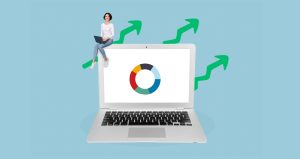Often, when we talk about Big Data, millions of huge computers processing vast amounts of data may come to mind, and while some of this is true, Big Data goes far beyond this common conception.
A good example that can help us understand the benefits of using this tool is the case of Netflix. Thanks to Big Data, this American company has managed to ensure that each user receives hyper-personalised recommendations, so that each person can see on their screen what the algorithm has determined they might be interested in.
What’s more, knowing what attracts users allows you to create new films or series with the guarantee that they will be an absolute success.
This term, translated into English, means “big data”, and depending on its origin we can distinguish:
– Social networks and websites: one of the most valuable sources of information for users, thanks to them it is possible to carry out an analysis of their behaviour and interests, analysing how they interact with content and thus drawing conclusions in relation to trends and patterns of information and behaviour. Let’s not forget that these platforms also collect vast quantities of personal information, demographic data, geographical data, tastes, etc. As a result, they will make it easier for companies to personalise their marketing messages, adapting them as closely as possible to the needs of the audience they are targeting.
– Biometrics: this technology contributes to Big Data with physical authentication data, collected by systems such as cameras, microphones or fingerprints. They are most often used to ensure security and identify users.
– Financial transaction records: data obtained from telecommunications, customer information. They enable companies to analyse their areas of activity, self-generated data: e-mails, voice notes, credit cards, voice notes, medical information, surveys, etc.
– M2M (Machine to Machine) data: this collects consumer behaviour through their personal devices, enabling us to track location, energy consumption or even daily movements.
The key to Big Data is not the vast amount of data it collects, but the subsequent analysis that enables businesses to develop more effective strategies. To do this, let’s look at a famous case, that of “nappies and beer”. A well-known American supermarket chain noticed that, in its databases, there was a statistically significant correlation between the two products. The company decided to create a loyalty card that gave it access to the demographic data of its customers. As a result, it was observed that the purchasers of nappies and beer were young men aged between 25 and 35, and that they usually bought these products on Friday afternoons. The explanation was most surprising, as the packs of nappies were bulky, the mothers asked the fathers to go and buy them themselves, and they came at the last minute. What’s more, they took advantage of the fact that they were already in the supermarket to buy beers to drink at home, because in American society it was frowned upon to go to bars until the early hours of the morning. The chain, seeing this phenomenon, decided to bring the nappies closer to the beer, which turned out to be a very effective strategy. This example reaffirms the importance of good Big Data analysis.
As we have seen throughout this article, there is no doubt that the use of Big Data is an excellent tool when it comes to establishing strategies that guarantee a company’s success. What’s more, analyzing this data can help us to deliver hyper-personalized content to each and every customer, enabling us to regain greater commitment and loyalty.






